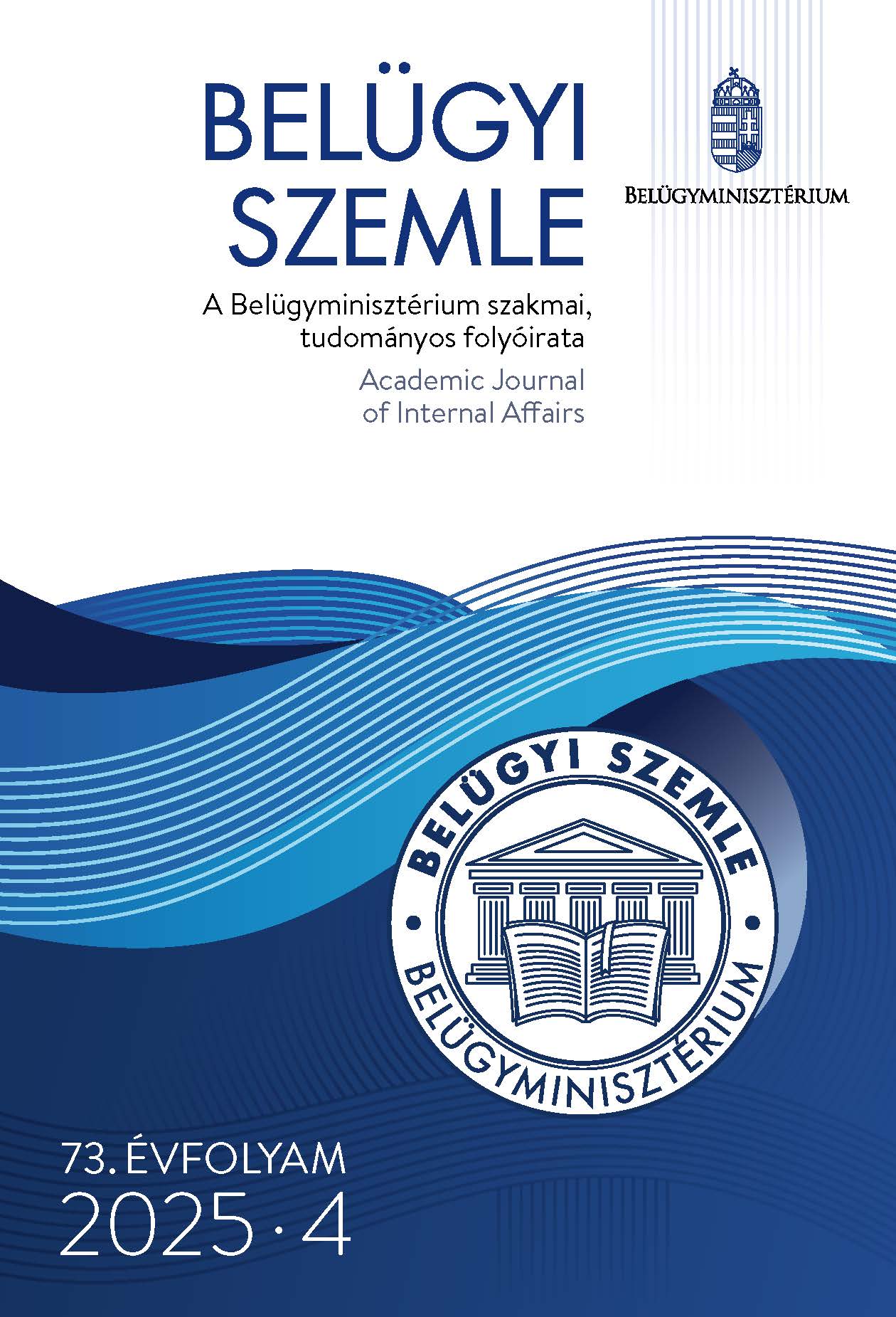Abstract
Aim: The aim of the research is to use the Healthy Organization Model to explore what strengths and areas for development there are in the public administration, what factors, processes, and characteristics there are in the public administration in which the public administration works very well and effectively based on the interview results of some organizations of the central public administration. In this paper, I will focus on one of the 20 health-disease dimensions of the Healthy Organization Model, which is decision-making. I will illustrate its functioning through the examples of a few organizations in the central public administration.
Methodology: Conducting semi-structured interviews with leaders at various levels in several central public administration organizations using an interview guide based on the Healthy Organization Model.
Findings: There are organizations and units where this area functions exemplary; there are organizations and units where they face more difficulties in the area of decision-making, but positive changes and efforts to solve difficulties are visible. The leaders use several methods to make decision-making effective within their jurisdiction, and they suggest possible solutions to the difficulties in decision-making process.
Value: Based on the leader interviews, it was revealed which mechanism of decision making in the central public administration is functioning exemplary, and which mechanisms are functioning not so efficient. In those organizations where certain mechanisms need to be developed, there may be possible to develop them with the good practices applied in other organizations.
References
Barta, A. (2020). Kormányzás és közigazgatás [Governance and Public Administration]. In Árva Zs., Gellén M., Koi G., Lőrincz L., Patyi A., Rózsás E., & Varga Zs. (Szerk.), Közigazgatás-elmélet [Theory of Public Administration] (p. 62). Debreceni Egyetem, Állam- és Jogtudományi Kar.
Belügyminisztérium. (2017). KÖFOP-2.1.5-VEKOP-16 Megvalósíthatósági tanulmány: A versenyképes közszolgálat személyzeti utánpótlásának stratégiai támogatása [KÖFOP-2.1.5-VEKOP-16 Feasibility Study: Strategic Support for Personnel Succession in a Competitive Public Service].
Bordás, P. (2021). Közszolgáltatások [Public Services]. In Jakab, A., Könczöl, M., Menyhárd, A., & Sándor, J. (Szerk.), Internetes Jogtudományi Enciklopédia [Online Encyclopedia of Legal Studies] (31).
Concordia. (2010). Az egészséges szervezet felmérés eredményei: Minta Vállalat – Hierarchia szerinti elemzés [Results of the Healthy Organization Survey: Sample Company – Analysis by Hierarchy]. Concordia Szervezet- és Vezetésfejlesztési Kft.
Forgács, D. P. (2019). A bürokrácia szociológiája [The Sociology of Bureaucracy]. Kossuth.
Imre, M. (2009). Az állam és a közigazgatás gazdasági szerepe és feladatai [The Economic Role and Responsibilities of the State and Public Administration]. In Verebélyi, I., & Imre, M. (Szerk.), Jobb közigazgatás – helyben járás és visszafejlődés helyett [Better Public Administration – Instead of Stagnation and Regression] (pp. 185–202). Századvég Kiadó.
Jenei, G. (2019). Adalékok Max Weber elméletének hatástörténeti problematikájához [Contributions to the Historical Impact Issues of Max Weber’s Theory]. Köz-Gazdaság, 14(4). https://doi.org/10.14267/RETP2019.04.13
Kaiser, T. (Szerk.). (2017). Jó állam jelentés 2017 [Good State Report 2017]. Nordex Nonprofit Kft.–Dialóg Campus Kiadó. https://joallamjelentes.uni-nke.hu/kiadvanyok/jo-allam-jelentes-2017/
Kaiser, T. (Szerk.). (2018). Jó állam jelentés 2018 [Good State Report 2018]. Nordex Nonprofit Kft.–Dialóg Campus Kiadó. https://joallamjelentes.uni-nke.hu/kiadvanyok/jo-allam-jelentes-2018/
Klein, S. (2001). Vezetés- és szervezetpszichológia [Leadership and Organizational Psychology]. SHL Hungary Kft.
Lapsánszky, A. (2019). A közszolgáltatások közigazgatás-tudományi alapjai: A piaci közszolgáltatások szervezése és igazgatása [Administrative Science Foundations of Public Services: Organization and Management of Market Public Services] (pp. 12–14). Ludovika Egyetemi Kiadó.
Lövey, I. & Nadkarni, M. (2003). Az örömteli szervezet – Szervezeti egészség, betegség, öröm [The Joyful Organization – Organizational Health, Illness, and Joy]. HVG Könyvek Kiadó.
Sallai, B. (2022). A bürokráciáról – újra [On Bureaucracy – Again]. Pro Publico Bono – Magyar Közigazgatás, 10(2), pp. 60–80. https://doi.org/10.32575/ppb.2022.2.3
Simon, H. A. (1982). Korlátozott racionalitás: Válogatott tanulmányok [Bounded Rationality: Selected Studies]. KJK.
Zoltayné Paprika, Z. (1999). A stratégiai döntéshozatal módszertani kérdései [Methodological Issues of Strategic Decision-Making] (PhD-disszertáció). Budapesti Közgazdaságtudományi Egyetem. https://phd.lib.uni-corvinus.hu/236/
Weber, M. (1947). The theory of social and economic organization (A. M. Henderson & T. Parsons, Trans.). Free Press.
Weiss, D. H. (1991). Problémamegoldás alkotó módon [Creative Problem Solving]. Park Kiadó.

This work is licensed under a Creative Commons Attribution-NonCommercial-NoDerivatives 4.0 International License.
Copyright (c) 2025 Academic Journal of Internal Affairs

